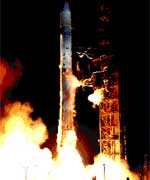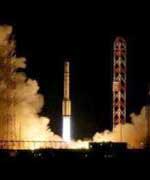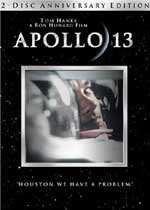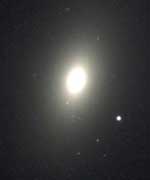
Image credit: NASA
In ecology a pioneer is a “species establishing itself in a previously barren environment”. Among human beings, pioneers “settle in unknown or unclaimed territory”. Among astrophiles, Pioneer was our first effort to probe the solar system. But it appears that NASA’s twin pioneering efforts have now made less progress toward the stars than expected and the question is “Why?”.
When NASA designs a mission assumptions are made about the craft’s operating environment. Initially, NASA had some deep concerns about sending the two Pioneer probes through the asteroid belt – after all, all those big ones could be joined by a lot of little ones!
Meanwhile NASA must plan a flight path to take the craft where it’s going. Based on route, mission payload, and other requirements, enough thrust must be provided to provide the needed lift. The big factor affecting thrust is gravity – the more you have, the more thrust you need.
One of the ingenious things about Pioneer 10 and 11 was NASA’s choice to equip the pair with two-way communications sensitive to doppler shifts. Based on frequency shifts NASA could determine craft speed relative to receiving stations on Earth. Using this data, NASA could adjust thrusters to fine tune probe trajectories toward their objectives. (Both craft flew by Jupiter while Pioneer 11 made a pass near Saturn.)
As long as the probes had fuel, mission controllers could adjust speeds and trajectories. But once out of fuel the pair could only make progress based on inertia and slingshot momentum provided by a Gas Giant.
It was during inertial flight that anomalies began to show up in the motions of the two craft. Doppler shifts showed an unexpected deceleration just outside the orbit of Uranus. At some 20 earth-sun distances (astronomical units – AUs) NASA began to see a “blue-shift” in probe transmissions. The pair continued “singing the blues” while surpassing Neptune’s orbit 10 AUs later. Today the probes have fallen short of their expected locations by a distance greater than the Earth to the Moon…
Speculation as to the cause of the blue shift abound. Pioneer 10 & 11 themselves have long been ruled out as the source. Most thinking cites an unexpected increase in gravitational pull toward the Sun. When transmitting signals back to the Earth, the craft’s electromagnetic beams “fall” further into the solar systems gravity well and that well is somehow “steeper” than once thought. Today the pair are not as far along in their outbound journey as anticipated.
The question is: “What is the source of the unexpected increase in gravity effecting the probes?”. One answer lies in “dark matter”. Strangely, another lies in “dark energy” – the opposing force to gravity in the Universe. A third is in the domain of “string theory” (two local “branes” – the equivalent of local n-dimensional “tectonic plates” – may intersect in our system). One theory relates to “back-gravitational pull” (from the opposite side of the Solar System opposite each probe). There is also the possibility that the pair are having “Solar Quadrupolar Moments” or are being slowed by unexpected material in the Kuiper Belt outside Uranus.
But when it comes to sorting out the perpetrators we can usually take Inspector Louie’s advice from the movie Casablanca: “Round up the usual suspects.”
Both probes are now more than 70 AU’s away from the Sun – but still within the solar system’s Kuiper Belt. Their deceleration pattern suggests that the source of the anomaly is widespread and constant. In a March 15, 2005 paper entitled “Pioneer anomaly: Gravitational pull due to the Kuiper belt”. Jose A. Diego and other investigators from the Institute of Astronomy of the National Autonomous University of Mexico write: “… there is no need to invoke all the dark forces of the Universe at the beginning, try first to explain this phenomenon with local, everyday physics and if this is not enough then use heavy machinery.”
And the everyday physics? Why the Kuiper Belt of course! But not exactly the same old Kuiper Belt. For Jose et al, the Kuiper Belt now begins some 10AU’s closer to the Sun – just outside the orbit of Uranus – and has a thickness of 1 AU. The team’s Kuiper Belt has gained mass to almost twice that of the Earth’s – a little less than ten times originally proposed. In addition that mass is biased toward the orbit of Uranus. The increase in mass arises from the fact that original estimates in total Kuiper Belt mass was based on small particulate sizes. By including ices of larger size – along with gases in its composition, the group believes enough mass can be accounted for to explain why the probes’ slowed down and carrier signals shifted.
The team goes on to say: “… it’s important to point out that the belt would also effect Neptune’s orbit…”. Effectively any increase in mass within the Kuiper Belt would cause Neptune to spiral in slightly closer to the Sun. The team estimates that the planet’s center of mass would shift 1.62 kilometers with each full revolution of 164.8 terran years.
“The radial density distribution of mass needed to explain the constant acceleration toward the Sun measured by the Pioneer space crafts can be explained by models of Solar System formation.” writes the team. To explain the greater concentration of mass around Uranus’ orbit they go on to describe “an inward transport of material” toward the orbit of Uranus over time.
Another potential source of unexpected slowing is drag on the craft caused by a steady stream of particles within the belt. In this scenario, the Kuiper Belt would also have more matter than originally thought but that material would be evenly distributed (to account for the constant loss seen in each probe’s momentum).
Whatever the ultimate source of the probe’s deceleration, there is no fear that – like its three earliest predecessors – the pair will reverse course and burn up in any atmosphere near us. These two Pioneers are still destined to “settle in unknown or unclaimed territory” as humankind’s first emissaries to the stars.
Written by Jeff Barbour



